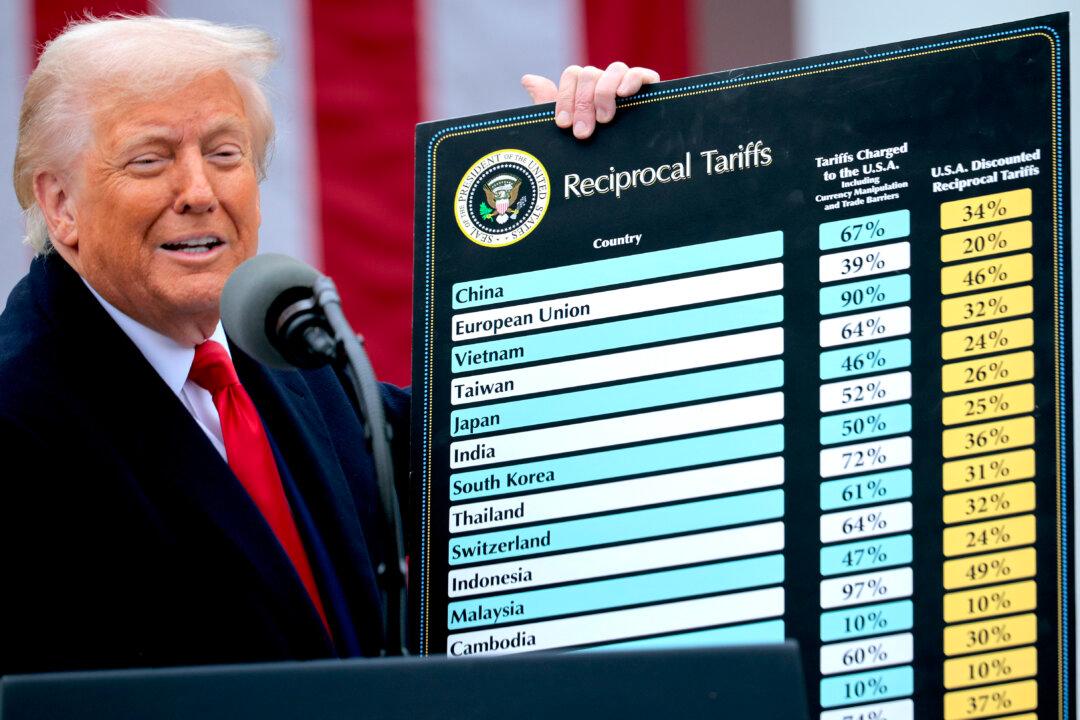WASHINGTON—The Federal Reserve announced Sept. 18 that it would cut its benchmark federal funds rate for the second time this year and signaled “modest adjustments” to the rates going forward.
As widely predicted, the central bank cut its target interest rate by 25 basis points to a range of 1.75 percent to 2.00 percent after its two-day policy meeting. The federal funds rate is a benchmark that influences borrowing costs of all types of loans, including mortgages, auto loans, and student loans.
The statement of the Federal Open Market Committee (FOMC) reflected the weakness in business investment and trade.
“Job gains have been solid, on average, in recent months, and the unemployment rate has remained low. Although household spending has been rising at a strong pace, business fixed investment and exports have weakened,” the FOMC statement said.
Federal Reserve Chairman Jerome Powell presented an upbeat view of the economy but emphasized that the central bank would “continue to monitor the implications of incoming information for the economic outlook and will act as appropriate to sustain the expansion.”
“The baseline economic outlook remains positive. The projections of appropriate policies show that participants generally anticipate only modest changes in the federal funds rate over the next couple of years,” Powell said at a press conference.
“Of course, those views are merely forecasts and, as always, will evolve with the arrival of new information.”
The Federal Reserve officials are now divided over the future path for rate cuts. Only 7 of 17 Fed officials forecast another rate cut this year.
The Fed chief emphasized that risks to the positive outlook were “global growth and trade developments.”
If the U.S. economy weakens more, he noted, the Fed was prepared to be “aggressive.”
Trump: ‘No Guts’
President Donald Trump criticized the Fed’s move, saying on Twitter that “Jay Powell and the Federal Reserve Fail Again. No ‘guts,’ no sense, no vision! A terrible communicator!”Trump has long been critical of the central bank, calling it the biggest problem for the nation’s economy.
He urged the Fed to cut its benchmark rates to zero or below after the central banks around the world started to adopt deeper negative interest-rate policies.
“The Federal Reserve should get our interest rates down to ZERO, or less, and we should then start to refinance our debt,” he wrote on Sept. 11.
The European Central Bank (ECB) launched a stimulus package last week, cutting its benchmark interest rate to a record low of minus 0.5 percent. It also restarted its 2.6 trillion euro ($2.90 trillion) quantitative easing program of bond buying.
Trump complained about ECB’s massive easing measures, saying they would weaken the euro against the U.S. dollar and would hurt U.S. exporters.
“European Central Bank, acting quickly, Cuts Rates 10 Basis Points. They are trying, and succeeding, in depreciating the Euro against the VERY strong Dollar, hurting U.S. exports,” Trump said on Twitter on Sept. 12. “And the Fed sits, and sits, and sits. They get paid to borrow money, while we are paying interest!”
The ECB’s economic stimulus has attracted criticism from some members of the bloc, including France, Germany, and the Netherlands. The central bank’s economist signaled this week that the ECB might cut interest rates even further if needed.
The ECB’s stimulus measure will fail, according to White House chief economic adviser Larry Kudlow.
“The Europe story—all this super easy money, zero and negative rates. You know, if it was going to work, it would have worked. And it has not worked,” he told The Epoch Times on Sept. 13 at the annual House Republican retreat in Baltimore.
“It’s very unhealthy for their banking, companies. And what they need to do, in my view, at least is to provide more tax incentives, to roll back regulatory barriers where they exist, to get some free enterprise into their economies. And that’s the path to growth.”
Powell, in the press conference, ruled out the usage of negative interest rates as a monetary policy tool in the future.
Liquidity Crunch
The Fed chief also addressed the concerns about the recent liquidity crunch.The short-term borrowing market was hit by a liquidity shortage early this week, prompting the Fed to inject cash into money markets for the first time in more than a decade. The effective federal funds rate rose above the top of its target range on Sept. 17.
The Fed had to intervene through “overnight repurchase operations” in order to keep the rate in the target range, Powell said.
“While these issues are important for market functioning and market participants, they have no implications for the economy or the stance of monetary policy.”
Corporations withdrew cash out of money markets to meet corporate tax payments and caused the liquidity shortage, he said.





